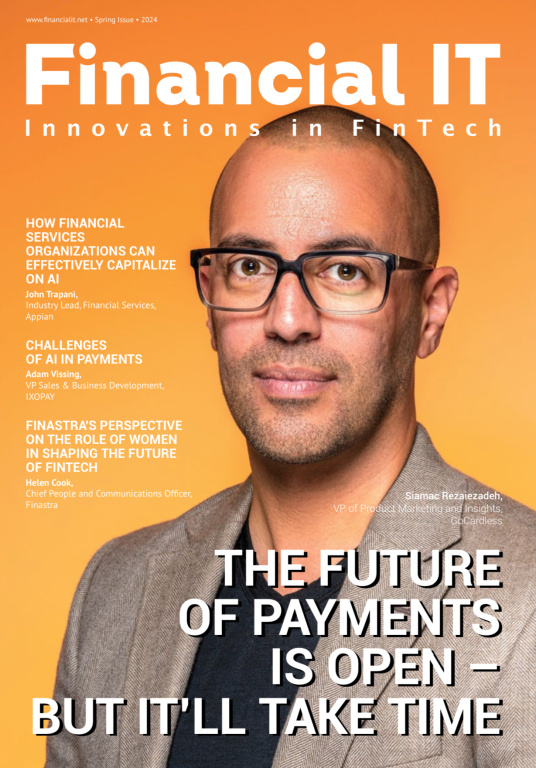What Will It Take for a Pan-European Payment Solution to Succeed?

- Nabeel Moosa, VP Strategy & Value Creation at Nexi Group
- 19.04.2024 12:30 pm #payments #wallets
There have never been so many ways to pay for goods and services: we can choose from global card-based brands like Mastercard or Visa, worldwide wallets like PayPal, merchant wallets like Amazon Pay, and mobile wallets like Google Pay or Apple Pay, the latter of which will soon open up NFC payments access to third-party providers. There’s even the option to use the European SEPA instant credit transfer scheme, which now works for online and offline shopping.
In such a competitive environment, Nabeel Moosa, VP Strategy & Value Creation at Nexi Group, asks what it will take for a pan-European solution like the European Payments Initiative (EPI) or Central Bank Digital Currencies (CBDCs) to succeed in 2024 and beyond…
The payment market has long ceased to be dominated by a few players. Consumers are familiar with a wide range of payment options, authenticated by entering a password and/or a quick biometric scan. Purchases are completed in just a few clicks, address data is automatically extracted, and the goods can even be with you on the same day.
But what do so many of the major successful payment methods have in common? They come from the United States. And they are card-based. European solutions on the other hand, such as the SEPA Instant Credit Transfer are not, and are strongly regulatory-driven. As such, pan-European initiatives like EPI and the Digital Euro have been a long time coming; but a cross-border payment solution created by and for Europe could be critical in establishing independence in payment traffic.
Local preferences hold the key to consumer choice
In almost every European country, national payment solutions are preferred for very different reasons. In Germany, for example, buyers like to pay by invoice, as it allows them to check the goods at home before paying – giving the consumer a sense of control and security. In Sweden, Swish is a popular way to make peer-to-peer payments, similar to MobilePay in Denmark. Expanding the popular app to enable users to make online and offline retail payments was an industry-changing move, led by a desire to enhance the user experience for local behaviours. This can also be seen across Poland with Blik, and Norway with Vipps.
But what makes domestic wallets so successful in their home countries?
Three things: customer centricity; relevance; and universal applicability.
- Customer centricity: Digital wallets are all based on an app. As such, they are designed to have a great UX, fully geared to consumer needs for simplicity, clarity, and convenience. Easy-to-use technology is already in the hands of consumers, who use smartphones for shopping and increasingly as a digital identity wallet. It is becoming an all-in-one, seamless experience.
- Relevance: Most country-specific solutions are joint projects of banks. This is important. It means consumers can use apps for online shopping or for transferring money to friends, regardless of who they bank with. Due to market penetration, they are accepted everywhere. This makes payment easy, because a consumer doesn’t need a separate app for every bank and every shop.
- Universal: National payment options work both online and in local shops. Consumers can easily switch between convenient card-based payments and peer-to-peer payments from within a single app.
The strategy of leading with a free peer-to-peer approach, as seen in Denmark and Sweden, and then scaling up, is not without risk for the providers though. The business model only pays off when merchants pay for sales via the payment solution, which requires the app to have a high market penetration. Otherwise, it unnecessarily adds complexity to the payment mix, confusing customers, who we know will simply just go elsewhere. Success at scale requires high investment for a long time before the business model can be monetised.
Scale is imperative for wallets too
Norway's Vipps and Denmark's MobilePay merged in autumn 2022 and now have a combined 75% market penetration among their local populations. We will see mergers like this more often as trade continues to become pan-European. If Europe is to enable alternative payment transactions that do not run completely through the global brands of US providers, it will need viable payment solutions across national borders.
So far, local wallets have struggled to make an impact. For example, in Germany, Paydirekt, Kwitt and Giropay have been unable to firmly establish themselves within the market. Even after these solutions merged in 2021, they did not enjoy broad acceptance. This could be because of a fragmented banking landscape, not enough marketing, or even the solution itself. One thing is certain though, it’s not that German consumers dislike wallets, as their high adoption of PayPal (a U.S. wallet) demonstrates.
So, what will it take for a European wallet to succeed? A new solution needs a clear consumer advantage that can compete with the most successful international brands such as Apple, Google and Amazon. Following an investigation by the European Commission, Apple has recently announced it will allow third-party mobile wallet and payment providers access to the iPhone’s NFC capabilities for the first time, which will drive further innovation and adoption.
It opens the opportunity for mobile wallets to compete for Apple Pay in-store volumes, which has seen incredible growth over the last years. But the authentication experience (which is incredibly simple on new iPhones) is still a differentiator, and competitors face a huge displacement challenge, as Apple Pay is already well established worldwide, with a huge, loyal user base.
Consumers need a compelling reason to download another payment app onto their smartphone, driven by the confidence that they can gain something new from paying with this method in daily life, compared to other national or global payment methods. Such a solution also needs the payment service providers and banks on the same side so that the experience is simple and consistent.
Overcoming the hurdles for a new European wallet
There is a huge opportunity to create and establish a new European wallet for payment transactions. Cross-border commerce is already reducing the reliance countries have on global payment solutions, and consumers are willing to embrace better-connected digital services.
The European Payments Initiative (EPI) has the potential to create a standard platform for European payments. To prove its relevance and succeed, however, it needs to get major banks and payment service providers pulling together in the same direction. This principle of joint cooperation between authorities, institutions and the economy also applies to the development of digital currencies (i.e. the Digital Euro), which is why Nexi is heavily involved in both these innovative projects.
The second critical pillar for a new European solution is customer orientation and added value. If it is user-friendly, trustworthy, removes barriers to entry or use, and offers added value beyond that of existing wallets, customers will use it and retailers will offer it.
In short: a solution will be adopted by consumers if they can see it is worth their attention. Consumers demanding it will mean merchants integrating it. This is the EPI’s ambition for wero, its digital wallet offer that will launch in Belgium, France, Germany and the Netherlands in 2024, to enable faster and more efficient payment flows between customers and merchants.
Additional momentum in the paytech market today is evident through the fact that there is no longer just competition between local and global payment methods: so-called super wallets have changed the rules of the game and the shopping experience into something bigger. That’s why the EPI digital wallet will offer faster payments, peer-to-peer (P2P) transactions, online shopping support, and loyalty programmes.
In 2024, traditional payments will be increasingly absorbed into e-commerce and the boundaries will become more blurred. Seamless commerce will reflect this through marketing, loyalty, shipping / logistics, financing offers, goods management, and the technical e-commerce platform itself. Don’t be surprised to see high numbers of retailers in 2024 start to act in way that puts payments within a larger network of services.
The challenge that regulators currently face in Europe is enabling this alternative payment offer, freeing the market from its dependence on U.S. payment solutions and Big Tech. To succeed, players have to move toward a comprehensive shopping experience where a payment means only a click; simplifying it as much as possible for the consumer. The power to achieve this is in their pocket, and in our hands.






















